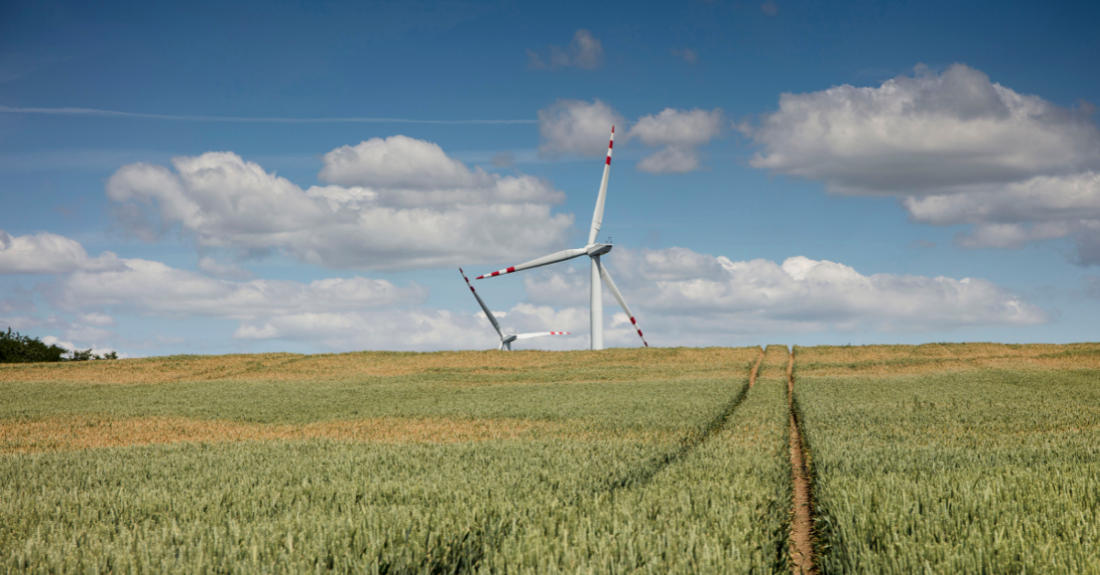
How can renewable energy help address the global food problem?
The global food system is at a critical moment requiring transformation to overcome significant challenges. Sadly, the world is not on track to achieve SDG 12.3 — and staggeringly, 14% of food produced is lost between harvest and retail, while an estimated 17% of total global food production is wasted. Agriculture is responsible for 30% of the world’s greenhouse gas emissions and this is only predicted to increase by 15–20% by 2050.

The global food system is at a critical moment requiring transformation to overcome significant challenges. Sadly, the world is not on track to achieve SDG 12.3 — and staggeringly, 14% of food produced is lost between harvest and retail, while an estimated 17% of total global food production is wasted. Agriculture is responsible for 30% of the world’s greenhouse gas emissions and this is only predicted to increase by 15–20% by 2050.
At the same time, 1 in 9 people go to bed hungry each day, a situation that has also been exacerbated by COVID. And with the global population projected to reach over 10 billion by 2050, we will require a 70% increase in food production. This becomes more difficult as land suitable for farming is shrinking by 5 million hectares every year, soil quality and agricultural yields are decreasing, and weather extremes and physical risk impacts on crops are increasing.
Demand for water, food and energy is increasing, driven by a rising global population, rapid urbanisation, changing diets and economic growth. Agriculture is one of the main causes of the climate crisis using one-quarter of the global energy expenditure while food waste is the third-largest emitter of carbon dioxide globally.

At the same time, agriculture is also one of the core answers to the crisis. Food security, energy security and sustainable agriculture are thus a critical ESG investment consideration in the context of ensuring water and food security, as well as sustainable agriculture and energy production worldwide.
One of the opportunities that comes out of this problem relates to renewable energy. With more than 250 million tonnes of food wasted annually in developing countries, increased access to energy could help modernise the food chain.
In developing countries, 40% of food loss occurs after harvest and early in the supply chain. The International Energy Agency (IEA) states that there is a massive opportunity to sustainably supply electricity to 1 billion people who live without electricity while improving food security for the developing world. Renewable energy generation through mini-grids, solar panels and decentralised renewables can offer an opportunity to diversify farm businesses, reduce energy costs, boost yields of some crops and reduce food waste through cold storage. Two examples of these innovative approaches to sustainable farming come from Ecuador and Perú.
Image: Farmer in cocoa Ecuadorian plantation, Image by Carlos Aguirre Getty Images

Over the last decade, the Ecuadorian government, private entities and international financial institutions such as the Inter-American Development Bank came together with a goal of developing clean, sustainable electrification of isolated communities. In 2013, they developed a Rural Electrification Project using renewable energy in isolated areas of Ecuador. In the Northeast of Ecuador, two isolated communities have benefited from this financing agreement as a result of the high water flow and solar exposure in the region. The creation of a photovoltaic microgrid and installation of hydrokinetic turbines has improved agricultural performance and provided access to better irrigation and heating systems. This in turn has allowed the communities to leave behind highly demanding farming techniques and enabled them to commercialise products such as cacao seeds.
In Perú, the Federación Departamental de Campesinos del Cusco (FDCC) has helped to modernise and develop sustainable agricultural practices in rural communities. Over the past almost 30 years, farmers have benefited from the installation of wind turbines, photovoltaic technologies that power kitchens, driers, sprinklers and the use of biodigesters as well as education from the department to help with understanding of these technologies. Families have gone from facing food insecurity and simple diets to diversified and nutritious diet with up to 30 varieties of crops. This is purely thanks to these new irrigation systems, crop rotation techniques, the use of biofertilisers and biological pest control. The use of renewable energy has also helped strengthen food storage practices that guarantee availability of food in the event of a crisis.
Evidently, there is a further need to completely reorient agricultural practices to producing healthy food in more efficient, sustainable and productive ways much like these examples.
Innovations and digital technologies have the potential to raise crop yields by 50% and reduce emissions from farming over the next two decades.
Adaptation projects have supported smallholder farmers in building climate-smart agriculture, incorporating new techniques in water harvesting, crop and income diversification, developing markets for climate-resilient crops, improve land management, and weather insurance.
The world is faced with a huge challenge whereby we need to feed a significantly larger number of people, while using less land, mitigating climate change, wasting less food, improving biodiversity and improving nutritional value. Despite this hugely complex challenge that requires collective action on agricultural productivity, renewable energy and climate action, there is hope in innovation and the improvements in the sustainability and productivity of agriculture.

